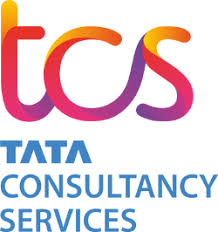Personalizing cancer care
%201%20(1).png)
Color Health uses GPT-4o to create a copilot application that integrates patient data with clinical knowledge to generate personalized cancer screening and treatment plans. It helps identify missing diagnostics and streamline documentation, reducing time to treatment by allowing clinicians to identify gaps in patient workups 4x faster.
.png)
Reduces time to treatment by 4x.
77
AI use cases in
Healthcare

%201%20(1).png)
Cactus Life Sciences implemented Microsoft 365 Copilot to automate routine tasks and augment the generation of scientific content under human oversight. They integrated the tool into their Microsoft 365 workflows to assist with drafting, editing, and approving complex scientific communications, streamlining content creation and dissemination processes. This approach improved the efficiency of internal content workflows enabling faster communication of critical scientific data to stakeholders.
%20(1).png)

%201%20(1).png)
Indegene integrated Microsoft 365 Copilot into its suite of productivity tools, including Word, Excel, PowerPoint, Outlook, and Teams, to automate routine email responses, document summarization, data analysis, and RFP development. The solution was implemented across departments such as content, pre-sales, finance, and project management, ensuring stringent data security and privacy standards while streamlining critical business workflows.
%20(1).png)

%201%20(1).png)
Ontada leveraged Microsoft’s Azure OpenAI Service Batch API and Azure AI Foundry to build its ON.Genuity platform, which processes 150 million unstructured oncology documents to automatically extract nearly 100 critical data elements across 39 cancer types. They integrated the new platform with their structured iKnowMed system using Azure Databricks for data ingestion and Azure Document Intelligence for text extraction, transforming manual chart review processes into an automated workflow that supports clinical decision-making and life science product development.
%20(1).png)
321
companies using
Employee Agents

%201%20(1).png)
Cox Automotive integrated Claude via Amazon Bedrock into its portfolio by first creating a sandbox environment to evaluate performance metrics and then selecting Claude 3.5 Sonnet for complex tasks and Claude 3.5 Haiku for high-volume content generation. They automated personalized dealer-consumer communications, generated engaging vehicle listing descriptions, and produced SEO-optimized blog posts, while also streamlining internal data governance through automated metadata generation. This integration optimized operational efficiency across marketing and internal data processes.
%20(1).png)

%201%20(1).png)
Quillit integrated Anthropic’s Claude to automate qualitative research tasks by summarizing interview transcripts, generating contextual citations, and threading conversation data into comprehensive reports. They implemented the AI tool into their existing research workflow within three months, streamlining report writing, transcription, and analysis while ensuring data security and high precision.
%20(1).png)

%201%20(1).png)
TCS partnered with Google Cloud to integrate advanced AI and generative AI capabilities into retail service offerings. They launched the Google Cloud Gemini Experience Center at their Retail Innovation Lab in Chennai, enabling retail clients to ideate, prototype, and co-develop tailored AI solutions that optimize supply chain, warehouse receiving, customer insights, and content creation. This approach automated processes using tools like Vertex AI Vision for warehouse receiving and leveraged Vertex AI with Gemini 1.5 Pro and speech-to-text to transform service centers.
%20(1).png)
78
solutions powered by
OpenAI

%201%20(1).png)
Notion reimagined its platform by deeply integrating OpenAI’s GPT‑4o, GPT‑4o mini, and embeddings across its core features. They prototyped an AI writing assistant during a hackathon and then built internal tools to rapidly evaluate and deploy new models, transforming workflows in search, note-taking, and knowledge management from static content to interactive, actionable insights.
%20(1).png)

%201%20(1).png)
Zendesk integrated OpenAI's models to create adaptive AI service agents that autonomously manage customer conversations and execute resolution tasks. They implemented a multi-agent architecture featuring task identification, conversational RAG, procedure compilation, and procedure execution agents integrated with existing support workflows through API calls and natural language procedure definitions, while providing real-time chain-of-thought visibility. This solution transitions from traditional intent-based bots to a hybrid model of scripted and generative reasoning, streamlining customer service processes.
%20(1).png)

%201%20(1).png)
Hebbia built Matrix, a multi-agent AI platform that orchestrates OpenAI models including o3‑mini, o1, and GPT‑4o to automate complex financial and legal research tasks. The platform decomposes intricate queries into structured analytical steps and integrates modules like OCR, hallucination validation, and artifact generation to process complete documents, creating an infinite effective context window. This solution streamlines due diligence, contract review, and market research workflows, drastically reducing manual processing time.
%20(1).png)
284
AI use cases in
North America

%201%20(1).png)
Cox Automotive integrated Claude via Amazon Bedrock into its portfolio by first creating a sandbox environment to evaluate performance metrics and then selecting Claude 3.5 Sonnet for complex tasks and Claude 3.5 Haiku for high-volume content generation. They automated personalized dealer-consumer communications, generated engaging vehicle listing descriptions, and produced SEO-optimized blog posts, while also streamlining internal data governance through automated metadata generation. This integration optimized operational efficiency across marketing and internal data processes.
%20(1).png)

%201%20(1).png)
Intuit integrated Google Cloud’s Document AI and Gemini models into its GenOS platform to automate the autofill of ten common U.S. tax forms, including complex 1099 and 1040 forms. The solution extracts and categorizes data from uploaded documents, drastically reducing manual data entry for TurboTax customers. This integration streamlines tax preparation workflows and improves speed and accuracy.
%20(1).png)

%201%20(1).png)
Block implemented Anthropic’s Claude models (Claude 3.5 Sonnet and Claude 3.7 Sonnet) on its Databricks platform to power its internal AI agent, codename goose. They integrated the LLM using secure OAuth-enabled connections and a custom MCP server to connect internal databases and tools, enabling employees across all roles to auto-generate SQL queries, analyze complex data, and automate workflows. This agentic integration streamlined software development, design prototyping, and data analysis by translating user intents into actionable insights.
%20(1).png)
%201%20(1).png)
%202.png)

%202.png)
%201.png)
%201.png)
%20(1)%20(1).png)
.png)


.png)
.svg)


.png)


.png)








%201.png)